About six years ago I bought a little Crinodendron plant at the plant heaven that is Nymans Gardens. When its first winter in my care approached I was so worried it might freeze and die in its pot that I wrapped it in a coat of bubble wrap. Not a good idea. For one thing: winter temperatures in inner London rarely dip below freezing point. But even if they do, it seems preferable to take the risk and just move the pot close to the house wall rather than leave the Crinodendron wrapped up for longer than two days at a time. I did not leave mine in the bubble wrap for months, mind you, and I did remember to water it sparingly every now and then. Still, it lost almost all its leaves and ever since it has looked really scraggy and bare.
I hoped it would regrow leaves from the bare branches, but it hasn't really. It kept on growing and every late spring produced its lovely flowers, but I can't say it clothed itself again. I've lost patience now. As it was such a pitiful sight with all these spindly branches, just a tuft of leaves at the top and otherwise naked, nothing like the true appearance of the plant, I decided it was time for drastic measures.
Remembering that I had often seen mature camellias hacked back and sawn off just centimetres above ground if they had outgrown their space in a garden and happily sprouting new shoots from the stump, this is exactly what we did: butcher it. I have no idea how my Crinodendron will take it - whether it will sulk, or even consider this to be the final straw and die. I'm very fond of it, there is some sentimental value attached to this particular plant - so what if I've killed it?? Well, nothing to do now but cross fingers. A fellow gardener once told me 'You have to be cruel to be kind'. I hope she was right.
The shrub was here when we moved in so I'm not exactly sure as to the correct botanical name but think it is Cistus x cyprius, or more likely even a white form of Cistus x purpureus. It sometimes sports the odd rose-pink flower or a white one where just half a petal is pink - very strange, but not uncommon. Cistus is of Mediterranean origin and as a protection against heat and drought has slim, greyish-green, slightly felt-y leaves and exudes resin that makes the branches sticky but also fragrant.
This year, as I'm not sure my old Cistus has any years left in it at all (the genus is short-lived), I took a good number of cuttings from the prunings. If all else fails, this lovely variety will still be with me albeit much smaller for a number of years. And I could plant something else in the original shrub's space...
I also used most of the off-cuts from my rose pelargonium (Pelargonium 'Attar of Roses' if I'm not mistaken) as cuttings. Mainly, because I can't help it... I just think it such a waste to throw away strong fresh shoots, I always (and almost despite myself) give them a try and a fair chance to root. With rose pelargoniums at least people love my gifts as they have such a wonderful smell and can be used in the kitchen, too - to flavour deserts or drinks, for instance. Not that I personally ever use my Pelargonium in that way... I just love running my hands through its leaves and enjoy the fragrance and the small but pretty pink flowers and otherwise leave it to the bees which are simply mad about this plant.
Mine started off innocently enough: a small plant, put in a 20 - 25cm pot. It grew happily for the first two seasons, sheltered in winter. Then the third spring I left it near the house wall - in full sun - and forgot to put the saucer back underneath the pot (which I had taken away for winter so the plant wouldn't sit in water for long periods and rot). A little later the rose pelargonium took off and seemed to explode - within weeks it easily covered a square meter and more.
Actually, I first discovered it with two Metrosideros plants - the lovely "Pohutukawa" or "Rata", also called "Christmas Tree" in its native New Zealand on account of their showy red flowers at that time of year - which I had raised from seed and stood nearby. Despite being confined to a flowerpot that by now can hardly contain any soil at all I fear, just roots, they too have taken off in the past two, three years that seemed incomprehensible until I was let in on their secret.
Whilst so far I have resisted my man's pleas to cut the Metrosideros back so as to be able to get to the water tap without getting a good whipping an brushing from them, the rose pelargonium really had outgrown its welcome. Thus I waited until the first big rush of blooms was over and then cut it back hard. Even if it should not regrow well (new plants from cuttings being preferable in any case, I guess) - it has managed to self-seed between the pebbles right under the door. Must remember to move the vigorous seedling before this plant too needs a butchering!
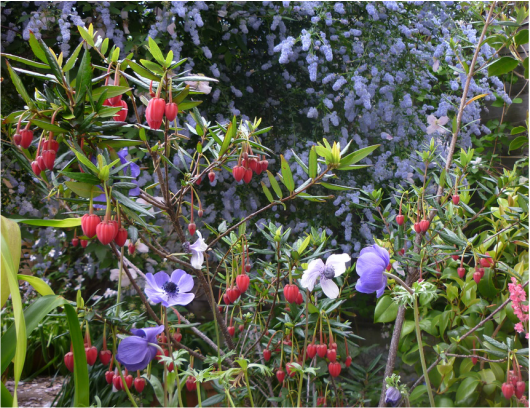
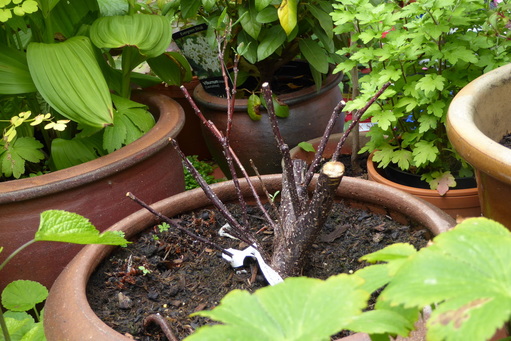
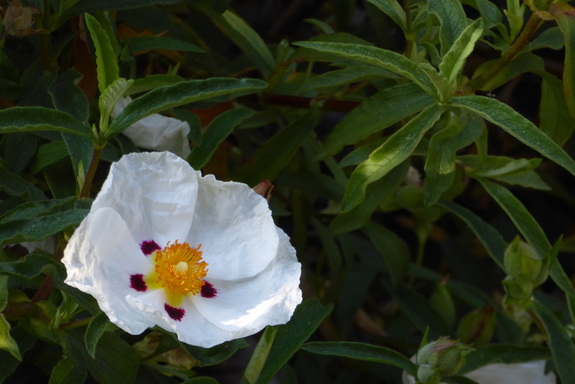
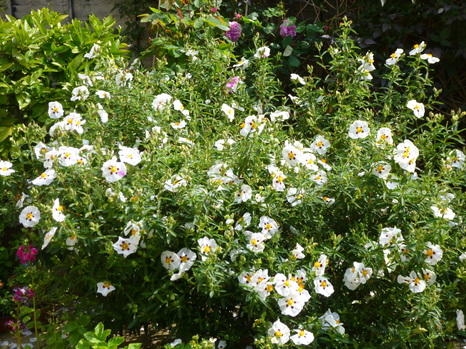
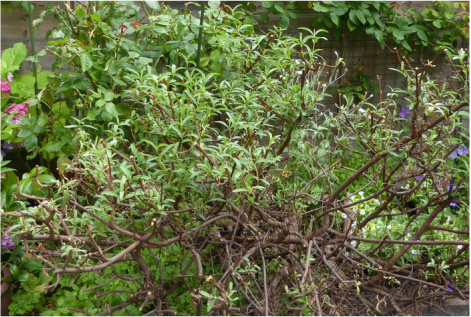
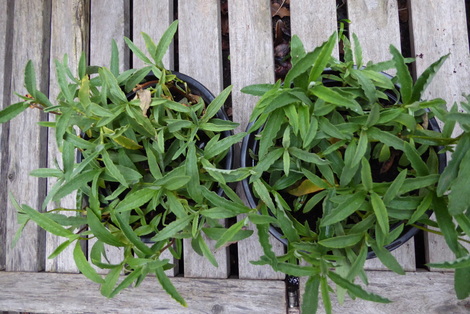
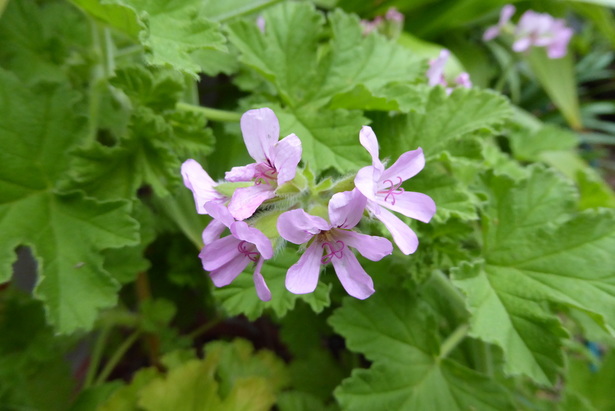
 RSS Feed
RSS Feed